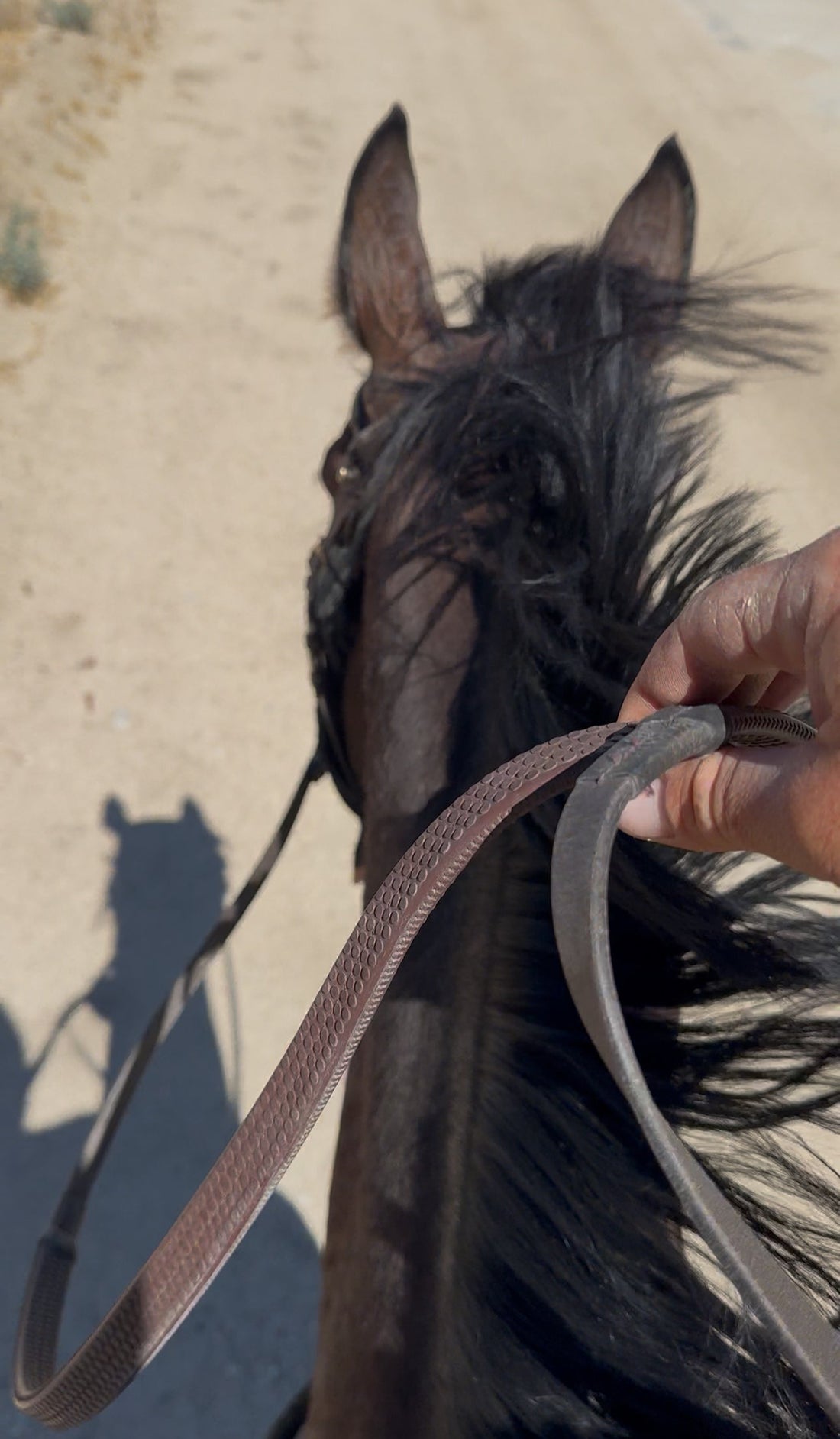There’s something about riding on a loose rein that just feels right to me.
It’s not just a style. It’s not just about going bitless. It’s a philosophy — one that I’ve been refining ride after ride, horse after horse, across thousands of miles of trail.
Riding on a loose rein tells me something important:
The horse is doing the right thing without needing to be micromanaged.
And for me, that’s the gold standard.
Why Loose Rein Matters
When you can drop the reins — totally — and your horse keeps walking forward, steady, soft, in rhythm… that’s when you know you’ve got something.
It means the horse is balanced.
It means the horse is mentally present.
And it means the horse actually wants to do the job.
Loose rein riding is also a test of trust.
It forces you to ask:
Is my horse moving because he understands what I want?
Or is he only doing it because I’m holding him in place?
Most horses are used to being ridden in a constant state of negotiation.
They pull, so we pull.
They lean, we half-halt.
They brace, we correct.
But what happens when you let go — and let them carry themselves?
That’s when you find out what’s really going on.
My Progression: From Contact to Rope Halter
When I first start working with a horse, we absolutely use contact.
Soft, consistent, meaningful contact.
A good dressage foundation is key — no skipping that part. The horse has to learn how to connect over the back, soften through the poll, move off the leg, and stay responsive. This is where balance and body control begin.
But as we build that understanding, my goal is always to start dialing it back.
I’ll go from bit to a hackamore.
From hackamore to sidepull.
And eventually — if the horse is ready — to just a simple rope halter with reins clipped on.
And the beautiful part is:
If the foundation is there, you don’t lose anything.
You gain more.
The horse becomes lighter.
More thoughtful.
More in tune with your seat, your balance, your intention.
Not because you're pulling less — but because they’ve learned to respond to more subtle cues.
What It Looks Like on the Trail
Imagine riding a horse through a canyon on a loose rein.
You’re not checking them every few strides.
You’re not managing every corner.
You’re just sitting there, letting the terrain and the partnership do the work.
Your reins are slack.
Your horse is alert, soft, and steady.
You go from walk to trot with a shift in your body.
You stop with a breath.
You turn with a thought.
That’s what I chase in my training — that sense of freedom, trust, and mutual awareness.
This Isn’t About Avoiding Contact
Let me be clear: this isn’t about riding with no contact because I or the horse are avoiding it.
In fact, accepting contact is a critical step on the way to riding without it.
If a horse braces against the bit, it’s not ready for the halter.
If a horse can’t bend, collect, or balance in a frame, it’s not ready for rope rein freedom.
We go through the steps — methodically.
And when the horse tells me they’re ready to carry themselves?
That’s when the fun begins.
Final Thoughts
I’m obsessed with loose rein riding not because it’s easier,
but because it’s earned.
It’s what happens after trust is built, after softness is installed, after balance is developed.
It’s not the shortcut. It’s the reward.
And when you feel it — when your horse moves out on a loose rein, calm, confident, and completely with you — you’ll know exactly what I mean.
📩 Want a horse that rides relaxed, soft, and on your seat — not your hands?
Let’s start training the right way. Contact us to book a spot.

